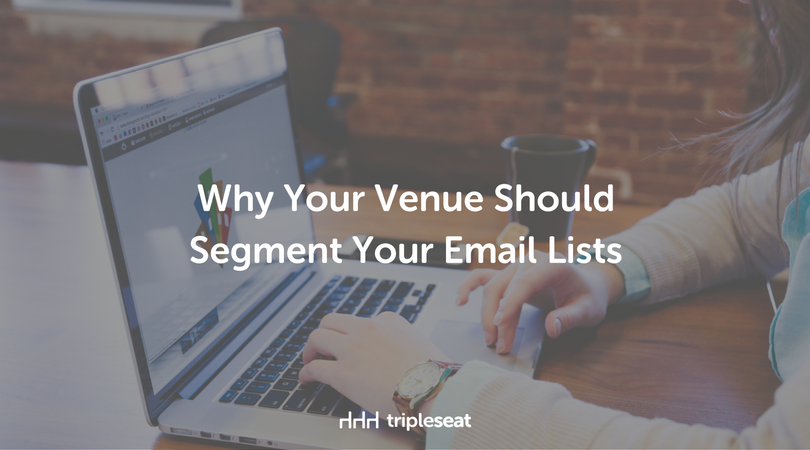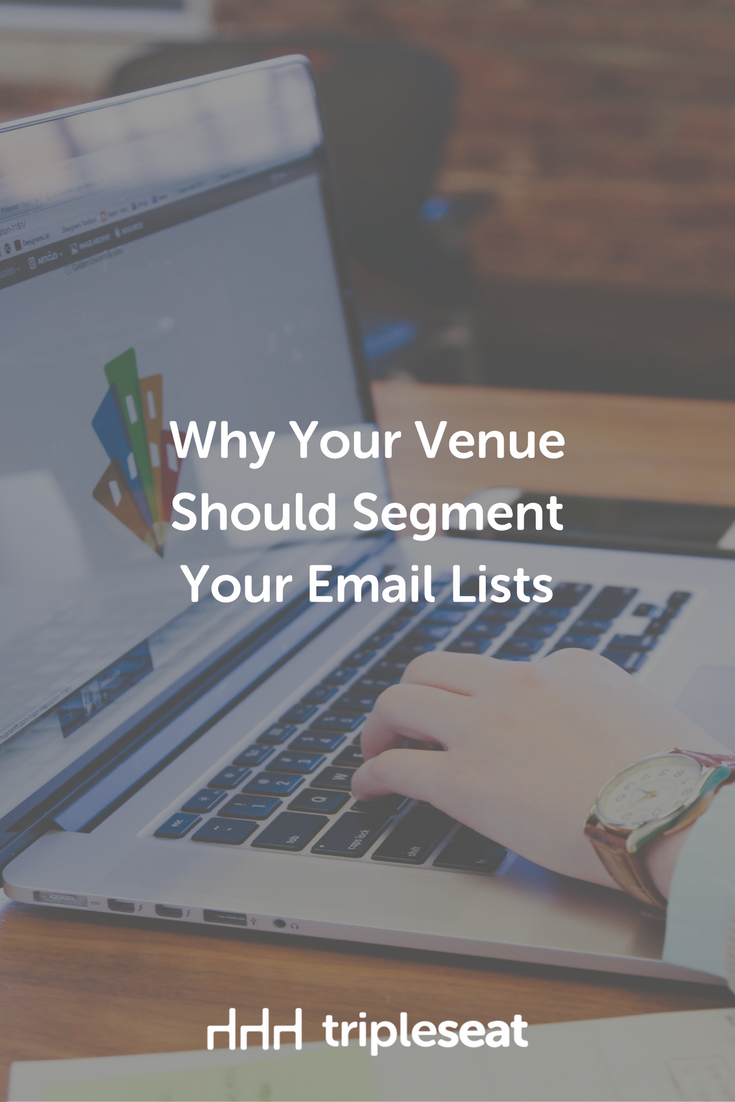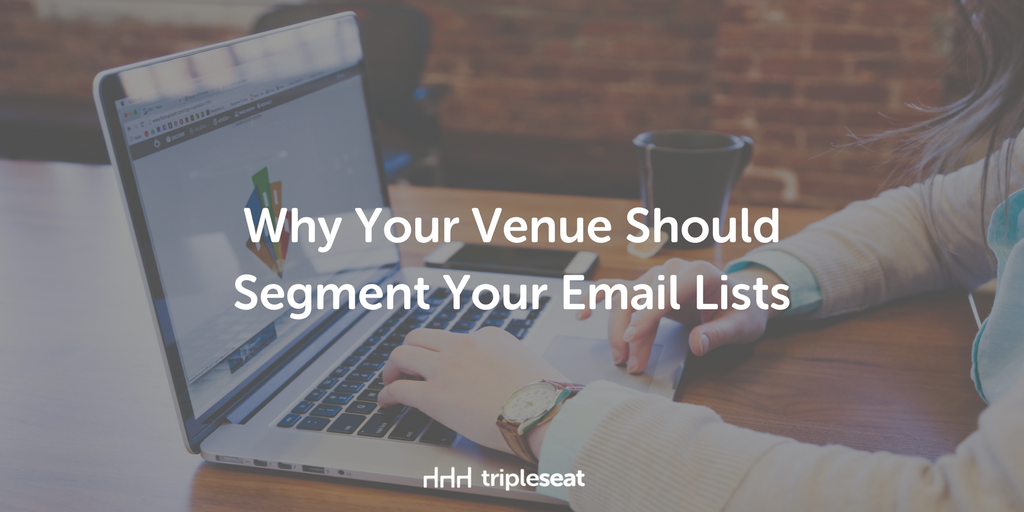Why Your Venue Should Segment Your Email Lists

Email marketing is not one-size-fits-all.
If your restaurant or venue is sending general emails about news and happenings to everyone on your list at the same time, you need to stop and rethink your strategy. You run the risk of emailing information that isn’t relevant to portions of your audience. People may tune out, unsubscribe from your list, or – even worse – stop booking events with you.
A survey from MarketingSherpa asked adult internet users why they unsubscribe from email lists, and 59% of respondents cited reasons that included irrelevant content and emails that didn’t meet their specific needs.
Receiving emails that aren’t relevant is frustrating for event planners who want to work with your venue. “Sometimes I just get put on a generic mailing list,” said Courtney McNeese of McNeese Thomas Group during our EventCamp panel, What Planners are Really Looking for in a Venue. “I would like to get an email that was about some updates to the menu or a new chef … something that would be really exciting to tell a client.”
One solution to this problem is to segment your email lists. Segmenting means putting your email contacts into different lists based on their interests, and then sending them email messages that include information that addresses those interests.
To get you started, here are 6 best practices to keep in mind if your restaurant or venue decides to use segmented email lists:
1. Create new lists
The first thing you should do is think about groups of people you communicate with and the needs of each group. Then create email lists for each. These groups could be regular dining customers, event planners, VIP clients, or people who book holiday or seasonal events with you. Add your existing contacts to these lists.
2. Allow new subscribers to choose lists
Most email service providers allow you to include your list options in your signup forms that you add to your website or share through social media. This makes it easy for new email subscribers to self-select the lists that work best for them. And it’s a sign to these new subscribers that your business does care about what they want.
3. Decide what content to include in your emails
Now that you’ve created email lists for specific audiences, decide what information you will be sending them. Consider what they’ve asked for, what links have gotten the most clicks in past emails, and what updates on specific services would they want to know about.
4. Explain the difference between each list
Make it clear to new subscribers what type of information you’ll be sending to each list, and what benefits they’ll get when they join. You can add this description to your signup form, website, and social media posts.
5. Place relevant signup forms on relevant webpages
Create signup forms for each list, and add them to the appropriate pages on your website. Target your audiences on the website pages they visit the most. For example, if you have a page about events at your venue, add your event planner list signup form there.
6. Use social media to promote your lists
Share links to your signup forms on your social networks’ profile information and in occasional posts reminding them about your email lists. You can also show your followers what they’ll be getting from you by featuring your latest email in a post.
Segmenting can help grow your business
It takes a little bit of work to set up, but segmenting your lists and personalizing your emails will pay off for your venue. Segmented emails have open rates that are 14.32% higher than non-personalized emails. More opens mean more chances for people to see that what you offer fits their needs and decide to become new or recurring clients.
Need more marketing tips?
Check out more Tripleseat blog posts that share marketing advice for venues and events. Or visit our Pinterest boards.


